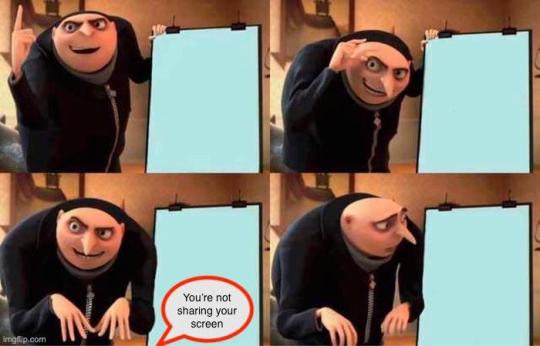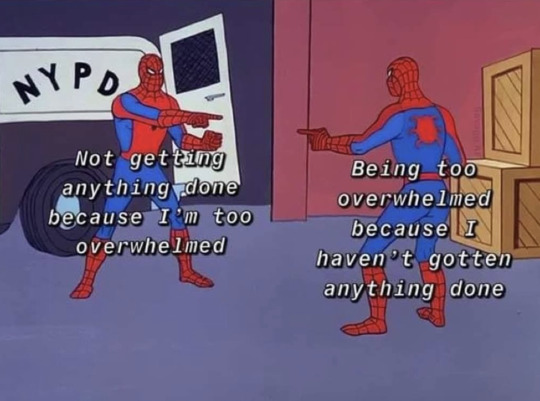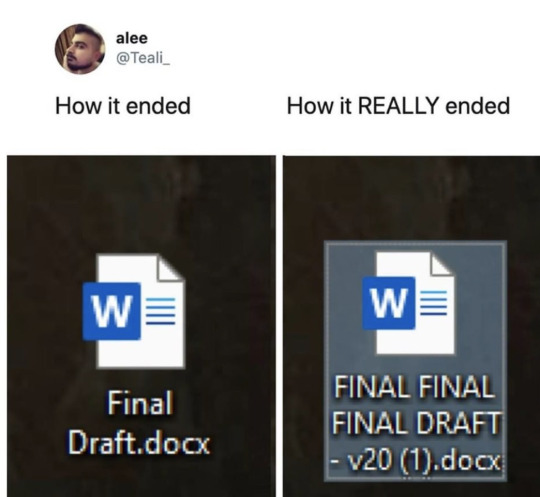Text
Reflection 7
Reflection: What field trips have you experienced this year? What has been successful? What ideas for improvements or changes do you have? What are ideas for bringing the world outside the classroom in? What are ideas moving outside the classroom to make connections with the surrounding neighborhood and with different art worlds and experiences of art?
The only field trip that my students have gotten to experience this year was exploring the Detroit Institute of Art virtually. This happened when I was working with my other school but it was pretty fun. We used this field trip to explore diversity then/now in museums and in art. We were learning about portraits and how to draw them but I wanted students to understand the purpose of them. I also wanted to see how they were used compared to now. We used the D.I.A. to view different portraits, which students found out that more European art had tons of exposure at the museum. Students explored artwork from the same eras and found out that there weren’t many portraits displayed but artifacts. As we moved closer to the now, then students began to see portraits of people of color. We examined Kehinde Wiley’s “Officers of the Hussars“, and compared it to the European art we just visited. It was at a point that one 7th grader said that he didn’t think African Americans existed back during those times because didn’t see any documents in the portraits we explored during the Renaissance Era. Which is wrong, but students began to understand the class and race complex in certain societies. This also explained why Kehinde Wiley makes his contemporary portraits.
It’s always challenging to keep art hands on and interactive in a virtual setting but we are doing our best. With limited materials, I have been trying to get students to play around with paper and recyclable materials that they can find at home. Hopefully after spring break, we can make bigger sculptures out of plastic bottles, cardboard, paper, and whatever else students can find. We used artist Nicolas Holiber last week to discuss climate change and global warming so hopefully we can expand on this subject while making our recyclable sculptures.
0 notes
Text
Reflection 6
What does it mean for you to teach artistically, to teach as an artist educator? When and how do you see and experience characteristics or dispositions that we typically affiliate with visual artists - such as experimentation, play, reinvention, and spontaneity - in your classroom? What are other dispositions you affiliate with being an artist? What do you aspire to inspire in your classroom as an artist educator?
To me, teaching artistically means to be open for exploration. It means problem-solving, thinking creatively, making connections, using different materials, finding different ways to explore a subject, and having students be hands on. Teaching artistically also includes having students collaborate with each other with ideas and even completing assignments.
This week, students are learning about sculptures and how to make their ideas come to life only using paper. We have been exploring various artists that use recycled materials to express their ideas. We have been experimenting with different shape cut outs and structure making to see what best works out for our version. This also goes into building problem solving skills. Since paper is extremely lightweight and some students have limited supplies, this project has students really think about how to create an artwork. We looked at artist Barbara Bullock, Hanna Washburn, and Nicholas Holiber so that students could picture sculptures in multiple forms. I specifically love Hanna Washburn because her work is nothing like I’m seen before. Her work includes organic shapes, recycled materials, and you can tell she just flows with art-making. Her artwork is provided in the slides below. I also enjoyed talking about Bullock’s piece about Trayvon Martin, it sparked conversations about Black Lives Matter and the wicked judicial systems in America.
My biggest goal is for students to think as creatively as possible. I believe students have this one sided view of what art is and what “good art” is at this age. I try my best in the classroom to challenge this idea and offer multiple ways of expression. I incorporate a lot of abstract versions on specific topics so students can see different perspectives. I also aspire to inspire by being an artist that isn’t afraid to let go. I still struggle with controlling my art. I hope that my students and I can work together on letting go and flowing when it comes to creating.
https://www.canva.com/design/DAEY30XfR7Q/6cd46Fj5QnpkXEYu4pee-Q/view?utm_content=DAEY30XfR7Q&utm_campaign=designshare&utm_medium=link&utm_source=publishsharelink
0 notes
Text
Reflection 5
Where have you seen effective interdisciplinary planning and teaching in your school/classroom? Where have you seen ineffective/unequal/inadequate interdisciplinary planning and teaching in your school/classroom? What are the differences between these experiences and practices? What are examples of interdisciplinary connections to Reading and Writing (Literacy) that you’ve seen in the art classroom so far? What ideas do you have for your own teaching?
This year, I have the opportunity to teach art therapy to a group of contained students. I love that my administration is letting me take upon this role because I do feel like students that have exceptionalities get left out the picture way too often. I specifically work with the lead social worker, in their classroom and integrate what they are learning in our art classroom. Ms. Sweat and I work together to come up with specific topics to talk about in class. Last week in their social workshops, they explored ways of dealing with frustration and calming down. Since I already planned for the other students in different classes to work on making album covers with their own tracklist. I thought it would be a great idea to intersect these two ideas. The goal was for students to create their own “calm down” album, that work lists the songs that bring them comfort as well as making their own album artwork. We started by having students talk about things that make them happy and things that make them angry. I then asked them what happens when they’re angry and what do you do? Have you figured out ways to calm yourself down, if not what do you think would work for you? We then played around with the idea of synesthesia when it comes to music and art. How does emotion play into color theory? How do certain colors make us feel? We listened to various songs that provoke a specific emotion, then students offered the colors they thought about while listening. We applied this theory to their album covers, where a lot of students used “happy” colors or “calming” colors and decorated them with pictures that gave their albums a theme. Students then added their own tracklist to the album cover (thank you for that addition). I love working with Ms. Sweat and she offers so many insights on her students. I wish I could work with more teachers in the future.
Usually when I see other subjects integrated into art, I see it go pretty well. A lot of art teachers that I’ve been taught by or have seen teach always through some sort of writing into the lessons. Whether it’s writing an artist statement, reflection about artworks, written responses in critiques, or adding poetry to art. I can see myself also doing the same in my own teaching because it seems very beneficial for students to be able to write and reflect about art. I see a lot of art teachers also having students research artists and read about them for inspiration. If interdisciplinary teaching is ineffective, I would believe it’s because the teachers themselves aren’t very familiar with the other subjects they are integrating. If it is an ineffective planning problem then I believe it’s because two teachers are working well together or the main teacher doesn’t have enough resources or support.
0 notes
Text
Learning sign language should be mandatory in all schools.
Why? Well I’m not really educated in this but like, communicating without making noise? Being more inclusive? Third language? Sounds dope to me
11K notes
·
View notes
Text
Reflection 4
What are the most successful (and stressful?) ways to represent student learning? What are the difficulties and concerns you have about showcasing student work? What are strategies that involve the larger school community in the work happening in the art class?
I believe some successful ways to represent student learning is to simply have students create what they have learned. Either having them complete a project with clear expectations and watch how they apply their learning. You can also assess students with questions or with a quick quiz. I also understand that pop quiz and quick quizzes can be stressful for students. I think the most stressful part about it isn’t under anyones control. Since students only see me once a week and I’m a new teacher, I see that students don’t remember some important things we talked about the week before. I believe I can do better with giving more material outside of class or have a mid week assignment for students. I also don’t want to overwhelm students either.
Majority of the difficulties I have faced in the past with showcasing student work is the students not being so confident in their own work. I completely understand because students do care about what other people have to say about their work and it takes time to build confidence in general. I also have concerns with inappropriate and disrespectful feedback. Even though art critiques and showcasing can have a guidelines of how to respond, I am still concerned about how some students might react to others artwork.
I do believe that I can do a lot better in involving the larger school community in my classroom. Since I am a remote teacher that us teaching in Detroit, this has become a lot harder because I am not familiar with the areas in New Jersey. I have been trying to make strives for their families to be apart of the classroom with students uploading their artwork that they complete outside of school to padlet. I try my best to send an email to all the parents to include them in our journey as we create. There is a lesson about public space that I would like to teach in the near future that includes their opinion about their communities. Through making “billboards” students will find a way to make their community aware of the issues that need to be fixed.
0 notes
Text
Reflection 3
What technologies are being used in your classroom and curriculum? What are the benefits and drawbacks of using technology in the art classroom, with young learners?
Since being virtual, technology is very important in our classroom. I have been using multiple platforms to try and engage my students in things that we can do online together. Our classroom is set up through google classroom, where students can find instructions, submit work and comment on each other’s post. I love using this platform for asking questions because it allows students comment and have a conversation. We have been using google whiteboard to draw and write response but I do like using Nearpod more. I like Nearpod because it allows the student to follow along on their screens. I specifically like the sticky note option that allows students to respond quick as well as draw their own ideas. When students draw or write something it can also appear anonymously. We have also been using canva.com for making digital art. Students have learned how to sketch their ideas out first and use the sketch a foundation for their digital creation. Students have used this for their name banners and their album covers
Student example: 7th Grade Favorite Song Album Cover: Exploring Color and Emotions
https://padlet-uploads.storage.googleapis.com/682786419/391141b25e788f0773768d3f1f06ad91/Peach_Brush_Strokes_Album_Cover.mp4
I believe the benefit of working with technology is that it also get students comfortable with working in where the world looks like it heading. Technology is being used everywhere and it’s so much apart of their lives. Students will at least be comfortable sharing their response digitally as well as written. A drawback is the technology is also as reliable as we think it is. Our connections aren’t the same, it’s not the same as in person learning. I believe young learners need that those in person moments instead of staying mute with their cameras off.
0 notes
Text
Reflection 2
Reflection: What forms of classroom talk do you see/hear in your class? What forms of classroom talk are missing or don’t happen regularly? What good ideas have you seen for facilitating critiques of student work or classroom discussions about works of art? What questions or concerns do you have about leading different kinds of classroom discussions?
There are multiple forms of communication happening in the virtual classroom. Since I am a new teacher, students are sharing a lot about themselves and their interests in the classroom. I see me offering new information to students and getting to know them while they create artwork about their lives. I hear poetry about their names, I hear new music from the playlist they've made about their favorite musical artists. I hear discussions about anime, tv, how we are feeling, and what music we like. I see a lot of responses in the chat to what we are discussing in the classroom. I also see students respond with emojis. I see students working in break out rooms and sometimes talking to each other. I also see students helping me with ways to communicate my ideas with their classroom.
We haven't really worked on critiquing artwork from each other yet but we have tried to discuss artwork. I usually come to class with questions prepared for students about the artist. It usually starts with what do you see? How would you describe what you're looking at? What do you believe the artist is trying to say through this artwork? I would love for students to have art critiques with student work in the future. I think I would use padlet so that comments can be made anonymous. I would probably instruct students to offer what they like about the artwork, what they get from it, and one way to improve the artwork based on the criteria for the project.
I guess my only concern with leading classroom discussions is that I wouldn't want my own opinions to what my students take from the conversation. I would love for students to challenge me if they disagreed or have a better way.
0 notes
Text
Reflection 1: Week 3/4
I started my new job at Great Oaks Legacy Downtown Middle School this week. It is a charter school located in Newark, New Jersey and hopefully I will be able to move there soon. As their part time art teacher, I teach grades 5th-8th grade once an hour every week. Altogether this makes up 11 different classes, which one being an art therapy class that I’m extremely excited about. Most students that attend identify as African American and Latino, while most of the staff is African American or Caucasian. We are working in a virtual setting for now, where we are working through google classroom and zoom meetings.
Since it was my first time meeting students this week, I wanted to make a lesson plan that familiarized me with their name. I also wanted students to explore the significance in their names as well. I came up with a lesson plan called “Power in Names”, where students would explore the meanings behind their names and apply it to their artwork. I especially wanted students to work on this beginning project for them to understand that it is important that others understand and to pronounce their unique names. Some people who find it difficult to pronounce or remember ethnic names use them as microaggressions. Asking people to minimize their birth names to fit into space because they find it too difficult. It minimizes their significance in a space as well. If we can remember great philosophers last names then we can also remember our student’s names.
Most classes started with a brief introduction about myself and them reading the class expectations. We also had time for students to express how they felt in each class session with displaying a funny gif on google whiteboard. We then moved to breaking down a spoken word poem by on youtube. Older students in classes 7th-8th grade responded well to the video and had a conversation about why some people have to shorten their birth names or why their parents gave them American or colonized names. Younger students in 5th -6th grade did ok with the video but I know it kind of blew over their heads.
As we made it through the powerpoint, we talked about two artists Assata Shakur and Erykah Badu that have changed their names their lifetime. Students began to understand that names can be changed artistically and for the liberation of themselves. We briefly touched on Assata Shakur’s involvement in the Black Liberation Army and how she changed her from Joanne Chesimard because it represented her “slave name”. I explained to them that most people who have ancestors that were slaves, their last names come from their slave master’s last name or plantation. As African American started to teach themselves about their history in America, many political leaders changed their “slave names” to names that represented their heritage or something meaningful to the movement of their people.
This then led us to our activity of the day which was for students to make their own name banners for their walls. Then to eventually use that draft to guide them in making their own digital name banner for their zoom accounts. Students were expected to draw their names in whichever script, write the meaning and origins of their names, and decorate their name banner with pictures that reminded them of the meaning. Students used www.behindthename.com to explain the many meanings of their names and the origins. Students also broke out into break out rooms to help each other and were expected to learn someone else’s name meaning in their group to report back in the larger group. Students came up with some extremely great content, especially their digital images.
Below is a link to their school’s art gallery featuring their name banners, links to more student’s work, and a link to the presentation I used.
Padlet
https://padlet.com/joclewis/dfkfgvml2o1sn671
Nashlee’s Digital Name Banner https://www.canva.com/design/DAEW-828QRo/FncCbd5RY3B9NmrMow4k6w/view?utm_content=DAEW-828QRo&utm_campaign=designshare&utm_medium=link&utm_source=publishsharelink
Power in Names Presentation
https://www.canva.com/design/D
0 notes
Text

I never considered negotiation this way before, especially as a tool to use and teach in a classroom setting. Wachtel explains that students who learn how to negotiation, will make them less selfish and create better bonding (Dodge, 2019). I understand why they say this because both parties benefit and get what they both want. I also believe that having students take upon this skill will increase their decision-making skills. It can foster a better sense of responsibility. Tamara mentioned that students who use the skill of negotiation will also be better problem solvers (Dodge, 2019). I agree with this statement because the student will develop multiple solutions to the problem.
Since I never thought about using negotiation intentionally in a classroom or teaching this skill, I now want to think of ways that I can use this in a classroom setting. In an in person setting, usually I pick classroom leaders to help with art projects. Maybe students can negotiate a leader schedule and which tasks they would want to be in charge of. Or when it comes to group projects, to have students negotiate which elements they will decide to include in the project. Teachers can also benefit with negotiating with students. This can help build bonds with students. I believe that students will fell more heard and also respected. Teachers don’t always have to have control in the classroom, sometimes it is also nice to give the control to students and observe how creative they are.
https://ozobot.com/blog/why-your-students-need-strong-negotiation-skills
0 notes
Text


👏🏾Education 👏🏾is 👏🏾a 👏🏾right,👏🏾 not👏🏾 a👏🏾 service 👏🏾
Pass along and use the shit out of them
233K notes
·
View notes








